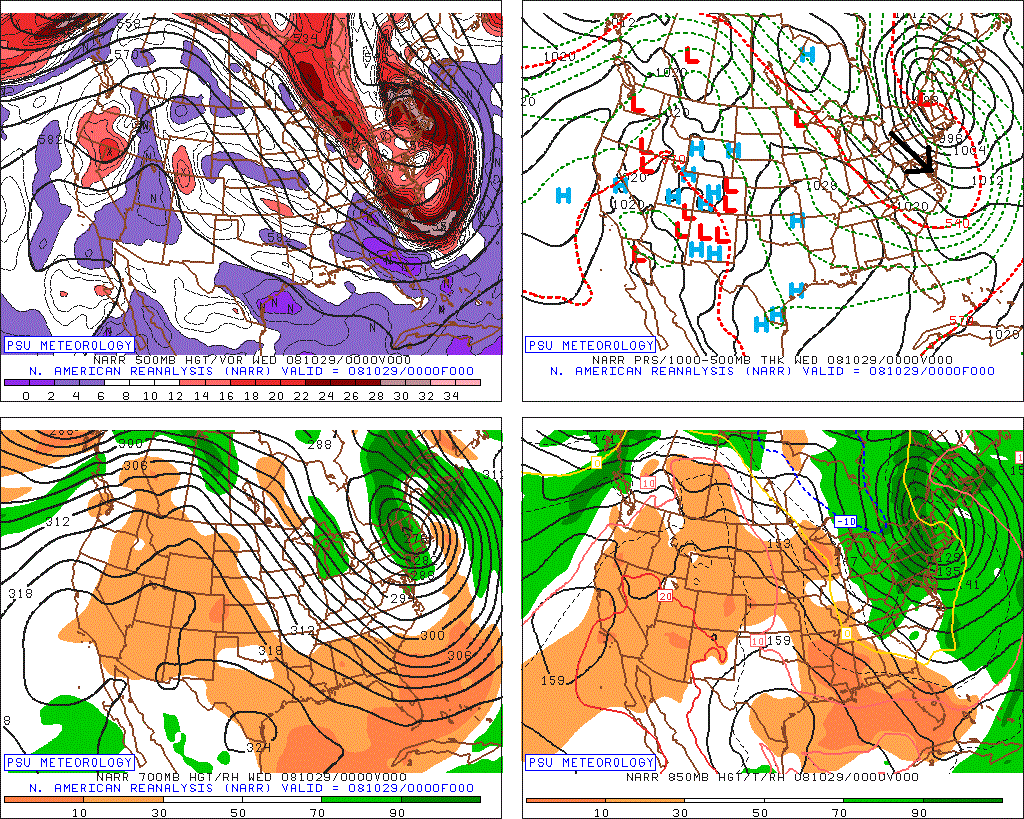8:00 AM | *Weather’s impact on the World Series in recent history*
Paul Dorian
Fenway Park, Boston, MA
Overview
The World Series begins on Tuesday night in Boston, Massachusetts where temperatures are likely to drop through the 40’s during the game with a shower or two possible and it’ll be even colder tomorrow night for Game 2 and windy as well. While this is quite chilly for baseball standards and also well below-normal in terms of climatological temperatures for this time of year, it will not be the coldest game in recent World Series history. That distinction goes to Cleveland in 1997 and there have been some other memorable World Series games in recent history that were impacted significantly by the weather. Cold weather certainly will not be an issue in the National League park in this year’s World Series year as Games 3, 4 and 5 will be played in Los Angeles, California where high temperatures should reach the 80’s on each game day.
Image from Game 4 of the 1997 World Series in Cleveland, Ohio; courtesy espn.go.com
Past notable World Series games impacted by weather
In terms of the coldest World Series games ever - and the records are sketchy pre-1970’s as MLB did not track weather records - the most memorable game was probably Game 4 of the 1997 World Series in Cleveland, Ohio between the Indians and the Florida (now Miami) Marlins. The first-pitch temperature for that game was 38 degrees with a wind chill in the teens. Snow flurries fell throughout the game and ice patches actually formed on the infield. The first two games of that World Series were played in Miami, Florida where temperatures were in the high 80’s. The second coldest game in recent history was the first game of the 1979 World Series in Baltimore, Maryland between the Orioles and Pittsburgh Pirates with first-pitch temperatures right around 40 degrees and a steady, chilly rain falling.
The weather maps are shown here at different levels of the atmosphere for the night of October 28th in 2008 which was the day after the suspended World Series game in Philly and the day before the resumed (and final) portion of the game. On this particular day in-between the suspended game and the resumed game, very cold air surged into the Philly metro region on the heels of a strong coastal storm and accumulating snow actually fell in some suburban locations. Credit for map: Penn State eWall (surface - upper right, 500 mb - upper left, 700 mb - lower left, 850 mb - lower right).
Phillies Win!
Perhaps the most memorable World Series game in recent history with respect to overall weather conditions was Game 5 of the 2008 World Series between the Phillies and the Tampa Bay Rays. That game began on October 27th with 50 degree temperatures and rain falling and it was suspended in the 6th inning as the rain simply became too heavy. The game could not be resumed on the next day as a powerful early season nor’easter continued to pound away on the Philadelphia metro region with a cold, steady rain and even several inches of accumulating snow in nearby Bucks County. Finally, two days after the game began, Game 5 resumed on a cold night in Philly with first-pitch temperatures at 44 degrees along with a gusty northwest wind - and the Phillies went on to clinch their second title ever.
Fun facts about the Red Sox and Dodgers
One final note, the last time these two franchises faced off in a World Series was in 1916 and the Red Sox had a star young pitcher named Babe Ruth who pitched all 14 innings in a Game 2 gem. In Game 2, the last 13 of those innings pitched by Babe Ruth were zeros - the start of a record scoreless streak of 29 2/3 innings in World Series play. This World Series scoreless streak record lasted 43 years until Whitey Ford of the New York Yankees broke it during the 1961 World Series against the Cincinnati Reds. In 1916, the Dodgers played in Brooklyn, NY’s Ebbets Field and were known as the “Robins”. While the Red Sox played their regular season games at Fenway Park beginning in 1912, they played the 1915 and 1916 World Series games at the nearby larger Boston Braves Field. As a result, tonight will be the first time the Dodgers franchise makes an October appearance in Fenway Park.
Meteorologist Paul Dorian
Perspecta, Inc.
perspectaweather.com




